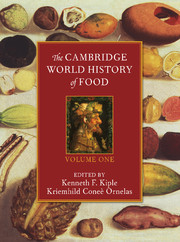Part III - Dietary Liquids
Published online by Cambridge University Press: 28 March 2008
Summary
Drinks, many of which were also globalized in the events following 1492, seem to have produced even more ill effects than foods. Unfortunately, more often than not, they did indigenous peoples unaccustomed to them no good. Along with wine and distilled beverages, beer – which had been brewed since the early stages of the Neolithic – entered all newly discovered corners of the earth as quickly as the Europeans reached them. Superficially more healthful was the spread of tea from China, coffee from Ethiopia, and cocoa from the Americas. But consumers of these beverages also demanded the addition of sugar and the processing of this Asian plant soon became an American enterprise fueled by unwilling African labor, which was also applied to coffee production.
Water that fostered disease was a problem from the very beginning of the Neolithic, and one that grew steadily worse as more and more people crowded together to pollute local sources. Alcoholic beverages were humankind’s first line of defense against pathogen-packed water, and later, the procedure of boiling water to make tea, coffee, or cocoa had the same purifying effect. But it was only in the twentieth century that public water supplies were rendered safe to drink in the world’s developed countries, and unsafe water remains a problem throughout the developing world.
- Type
- Chapter
- Information
- The Cambridge World History of Food , pp. 617 - 618Publisher: Cambridge University PressPrint publication year: 2000

